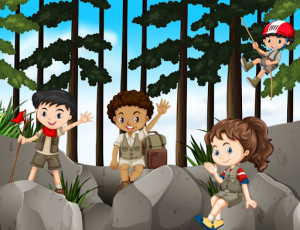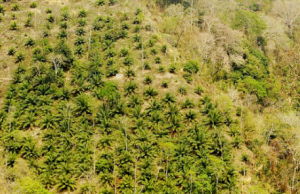Whose Forests? Inspiring Stories from CBSE Class 5 EVS Chapter 20
Welcome to iPrep, your Learning Super App
Our learning resources for the EVS chapter Whose Forests? are designed to help learners understand why forests matter — not just as trees, but as homes, traditions, and livelihoods. With beautiful animations, questions, and notes, this chapter helps you think deeply about nature and people.
Whose Forests? Exploring the Lives of Forest People
A Walk with Suryamani: Learning from the Forest
Meet Suryamani, a girl who loves the forest as much as you love your home. Every Sunday, she takes children into the forest classroom to learn. They discover trees, plants, birds, and animals — all through their own experiences. Songs in Kuduk fill the air as they explore.

If the forests are not there, we too will not remain.
This idea is at the heart of Whose Forests? — understanding that forests aren’t just important to the environment but also to the people who depend on them.
Growing Up in the Forest
Suryamani grew up in a tribal family. They used forest leaves, herbs, and bamboo to make utensils and crafts. This life changed when a contractor blocked their access to the forest.
In Whose Forests?, we learn how such changes affect entire communities.
Why Do Forests Matter?
- Forests give food, shelter, and natural medicine
- Adivasis rely on forests for survival
- Like a collective bank, forests must be used wisely, giving only what is needed
Think About It:
- Why did Suryamani’s family lose access to the forest?
- Can you think of another example of a collective resource like in Whose Forests?
Suryamani’s Education and Mission
Suryamani’s uncle encouraged her to study, even though she didn’t want to leave her village. She became the first girl to graduate college from her village and later joined the Jharkhand Jungle Bachao Andolan to protect forest rights.
Through her work, she proved how education and awareness can protect both people and nature, just like the ideas taught in Whose Forests?
Suryamani’s Torang: A Forest Learning Center
She founded Torang, which means forest in Kuduk. Here, children and elders gather to:
- Practice music and traditional dance
- Identify medicinal plants and create eco crafts
- Speak in both Kuduk and school languages

Traditional dances and crafts are taught at Torang.
Activity: Cultural Heritage
- Find a folk dance or traditional craft used in your region.
Draw or describe it in your notebook.
Share your findings with the class.
The Right to Forest Act, 2007
Whose Forests? teaches us about the laws made to protect forest dwellers. This 2007 law gives those living in forests for over 25 years the right to:
- Use land for farming without clearing trees
- Collect forest products like fruit, leaves, or bamboo
- Defend and manage forests using their Gram Sabha
Discuss:
- Why is a law like this needed?
- How does it benefit people and the natural world?
- Farming Together in Mizoram
In Mizoram, tribal communities use a lottery to share land each year. This system, called jhoom farming, includes:
- Letting the land rest between crops
- Fertilizing it naturally with bamboo ash
- Planting multiple crops together

Jhoom farming keeps the soil fertile.
Activity: Design A Sustainable Farm
- Imagine you are part of a forest community like those in Whose Forests?
Choose 2–3 crops and think about how you’ll protect the land.
Draw your farm and label your best ideas.
Forest Life in Kerala
In Kerala, tribal groups like the Kurumbas also depend on the forest for food and medicine. Their lives show how people and nature can support each other. Like Suryamani’s community, they protect what provides for them.
Celebrating the Forest – The Cheraw Dance
After farming, communities dance the Cheraw using bamboo sticks. It’s a tradition that brings the whole village together in joy.
Watch it online — dance with friends — and see how fun teamwork can be.
What We Learn from Whose Forests?
- Forests are homes and lifelines, not just resources
- Culture and forest life are deeply connected
- Laws can protect both people and nature
- Working together, we can manage forests wisely
Final Activity: My Forest Promise

- Write a promise to protect nature and forest communities.
Example:
I will reduce paper use and plant one tree every year. I will support life in every forest.
Decorate your pledge with drawings.
Chapter Summary
Whose Forests? helps us understand that forests belong to those who live with them, not just around them. From Jharkhand to Mizoram to Kerala, we meet strong communities that respect and protect nature.
To read the full NCERT chapter of Whose Forests?, click here.
To go back to the previous chapter, A Seed Tells a Farmer’s Story, click here.
Practice questions on
Get your free practice quiz of 20+ questions & detailed solutions
Practice Now








